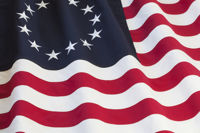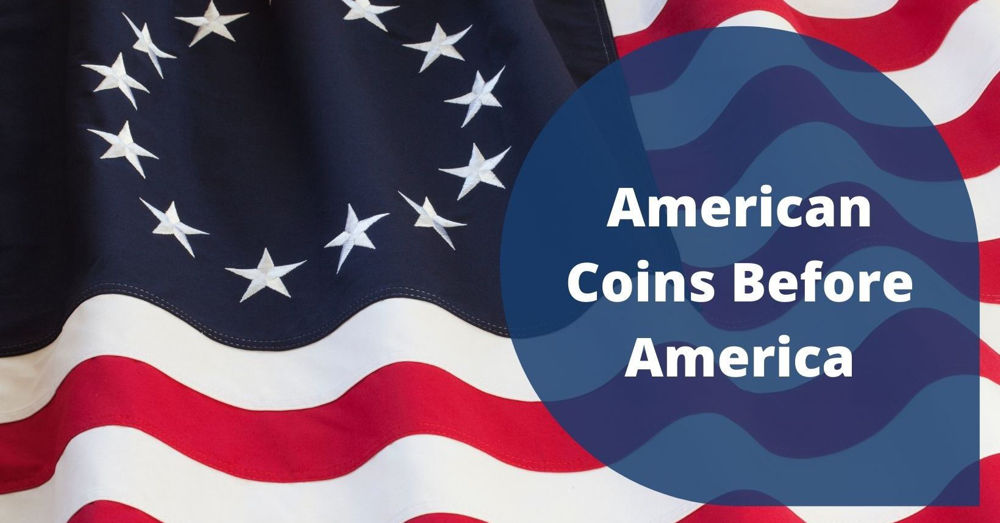Posted on July 18, 2021


Hundreds of years ago, before the United States was united, America was a land of independent colonies settled by people from different nations. Even though there wasn’t a unified mint at the time, many different coins were used to help the colonies conduct business with one another.
Prior to the Revolutionary War, the American colonies were advised not to mint their own currency by their British rulers. (After all, making money was, and remains, a privilege reserved for central government mints.) But the colonists couldn’t rely on barter for all transactions.
Instead, precious metal coins of gold and silver were transported from England to the new land. Coins from other foreign lands like Spain and Germany were also used during this time. The Spanish milled dollar (also known as the piece of eight) was one of the most-used coins at the time by colonial citizens, having been minted in the Spanish silver-mining colonies of Mexico and Peru as early as 1500.
The supply of money coming in from overseas was not enough to support the colonial economy. Therefore, the colonists needed to find a way to produce their own coinage for circulation.
The first North American coins were struck by John Hull and Robert Sanderson, both silversmiths who operated a mint in Boston, which was part of the Massachusetts Bay Colony. Hull and Sanderson struck several coins that were all marked with the same year: 1652. Therefore, it’s difficult to know which of these coins was first struck.
Early colonial coins have different markings on the front, but they all bear Roman numerals on the reverse to denote the coin’s value, such as III for three shillings and XII for twelve shillings. These coins also are notorious for their poor design and striking. For instance, multiple strikes of the Willow Tree Shilling resulted in an often illegible design as time wore down the coin, making it difficult to decipher.
Because there was no official mint in the colonies at the time, anyone could be granted permission to strike their own coins. For instance, Connecticut businessman Samuel Highly mined copper on his property and used it to mint coins he dubbed “Highly coppers.” These coins, of which there were an estimated 15 varieties, are dated from 1737.
After America prevailed in the Revolutionary War, even more confusion over coinage developed. You might imagine this to be the case; simply consider trying to settle a transaction that involved Spanish dollars, English shillings, and Highly coppers.
In the resulting Articles of Confederation — which served as America’s first constitution —— each colony was given the right to produce and set values for their own coins. Independence from national mints probably appealed to the Founding Fathers… However, the resulting hodgepodge of currency created chaos. Coins varied in value from colony to colony, and there was absolutely no continuity within the country.
This led to the first circulating coin in the United States in 1787: the Fugio cent, otherwise known as the Franklin cent, after its designer, Benjamin Franklin. The Fugio cent was made of 0.36 ounces of copper and had the design of the sun and sundial on one side, with the reverse depicting 13 chains representing the colonies and the phrase “We Are One.” This coin was intended for nationwide usage.
It’s important to note that the Fugio cent was based on the prior Continental dollar coin. And while the Continental dollar was reportedly minted in 1776 before the Fugio cent, it was never officially circulated. Franklin also designed the Contentiantal dollar and based the Fugio cent design off of his previous work.
During this time, states were still producing coinage for local usage. Coins like the New Jersey Copper and Massachusetts Copper were minted and circulated in their own states. Other notable coins from the same time period include:
 In response to the confusion of local coinage, Congress passed the Coinage Act of 1792 (also referred to as the Mint Act). This legislation resulted in the creation of the country’s first national mint in Philadelphia, as well as standardizing coinage based on design and production.
In response to the confusion of local coinage, Congress passed the Coinage Act of 1792 (also referred to as the Mint Act). This legislation resulted in the creation of the country’s first national mint in Philadelphia, as well as standardizing coinage based on design and production.
The Coinage Act set the base unit of money in the country as the silver dollar while also creating a decimal system for smaller amounts of currency as well. Thomas Jefferson was a huge fan of the decimal system (100 pennies to the dollar) compared to the rather eccentric British system (12 pennies to the shilling, 20 shillings to the pound).
The value of the American silver dollar at the time was pegged to the Spanish milled dollar. In other words, the American currency system is based on actual pirate money.
According to the Coinage Act, coins were valued by their metal composition:
|
Precious metal |
Value |
Front side inscription |
Reverse side inscription |
|
Copper |
|
“Liberty” and year of minting |
“United States of America” and image of an eagle and denomination |
|
Silver |
|
“Liberty” and year of minting |
“United States of America” and image of an eagle |
|
Gold |
|
“Liberty” and year of minting |
“United States of America” and image of an eagle |
These coins and the dollar-based unit system would be the basis of the United States currency and coinage system for generations to come, with most denominations still produced to this very day.